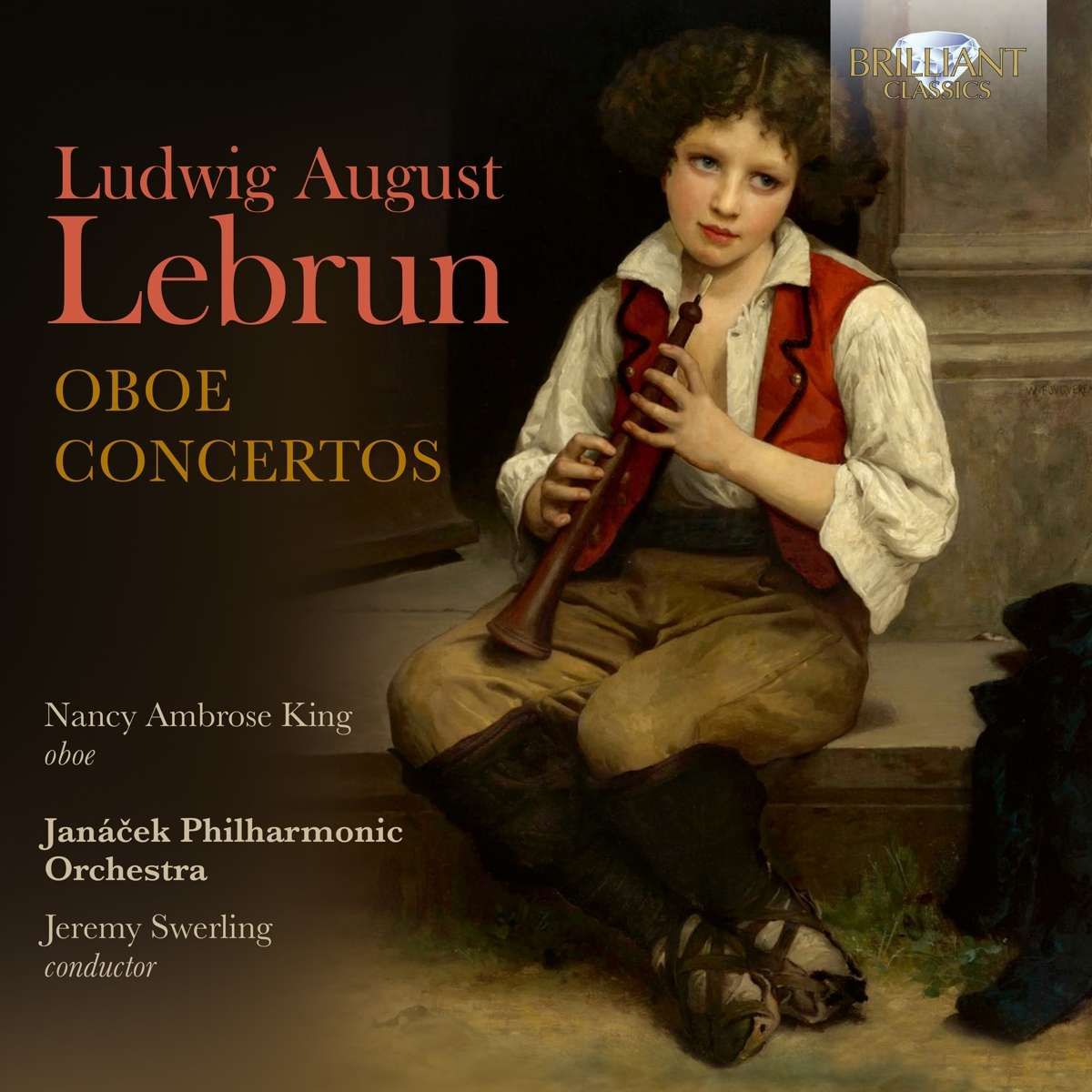Košík
Váš košík je momentálne prázdny.
Lebrun: Oboe Concertos
12,00 €
Formát:
CD
Dostupnosť:
7-14 dní
Katalógové číslo:
97009
EAN kód:
5028421970097
Autori:
Ludwig August Lebrun
Interpreti:
Janacek Philharmonic Orchestra, Jeremy Swerling, Nancy Ambrose King
Vydavateľ:
BRILLIANT CLASSICS
Zoznam skladieb
Oboe Concerto in G Minor, André No. 21 I. Allegro
2 II. Adagio
3 III. Rondo
Oboe Concerto in F Sieber, No. 7
4 I. Allegro
5 II. Adagio
6 III. Rondo
Oboe Concerto in F Sieber No. 3
7 I. Allegro
8 II. Adagio
9 III. Rondo
Oboe Concerto in D Minor, André No. 1
10 I. Allegro
11 II. Grazioso
12 III. Rondo
Popis
Classical-era oboe concertos, full of flourish and elegantly turned melodies in polished and critically praised recordings from 2000-2.
‘This repertoire certainly deserves your attention,’ wrote the Fanfare reviewer when this album was first issued, ‘for it is an excellent alternative - even a potent supplement - to the Mozart oboe concerto.’ He went on to praise the ‘fine tone’ and ‘impressive technique’ of the soloist, American oboist Nancy Ambrose King. The Janáček Philharmonic play with ‘verve, fine drama, and an excellent sense of unity from beginning to end,’ conducted by Jeremy Swerling who ‘keeps a nice grip on the proceedings, but also allows some flexibility in the way things are done.’
As to the repertoire itself: Ludwig August Lebrun (1752-1790) was an oboist by training, and the son of an oboist at the Mannheim court, Alexander Lebrun. Ludwig evidently wrote these concertos, and another 10 in the same vein, in order to showcase his own abilities on an instrument which was evolving rapidly in terms of technical innovation (projecting further, with more reliable tone) and thus allowing for greater virtuosity on behalf of both composers and performers.
There are four concertos here, and they all adhere to the standard three-movement form and belong to the idiom of the Mannheim school exemplified by exemplified by the likes of Danzi (whose daughter Lebrun married) and Cannabich. There are delicate melodies as well as spectacular virtuosity in music filled with imagination, humour, and depth, not to mention the occasional unexpected turn of phrase.
These are not miniature or insignificant pieces. The opening G minor piece is developed with the kind of pathos we associate with the key in the hands of Mozart, and after two F major concertos, the album concludes with a poignant and stern D minor concerto, punctuated by trumpet and drums, and enclosing a noble Grazioso slow movement where the oboe sings like an abandoned operatic heroine. Prihlásenie
Newsletter



